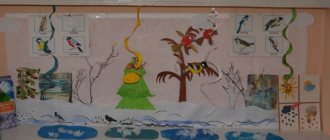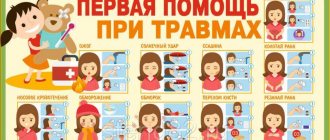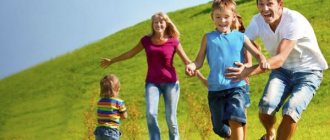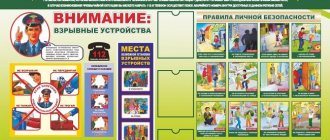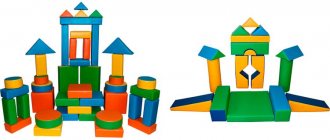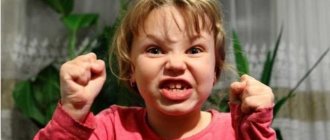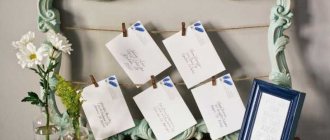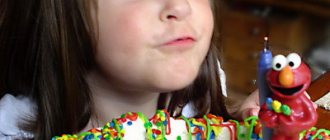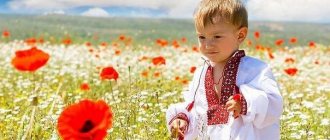Passport of the center for experimental activities of the senior group "Ezhevika"
Transcript
1 municipal autonomous pre-school educational institution “Kindergarten 55” address: Krasnoyarsk, 9 May st., building 10 “D”, INN, checkpoint, tel/fax: (391), ; Passport of the center for experimental activities of the senior group "Ezhevika" Teachers: Grishchenko Galina Pavlovna Cherepanova Anastasia Aleksandrovna Krasnoyarsk 2019
2 Purpose of the experimentation center With the introduction of the Federal State Educational Standard for Preschool Education (Order of the Ministry of Education and Science of the Russian Federation dated October 17, 2013 N 1155), the research activities of preschoolers received a new impetus in development. The Federal State Educational Standard for Education requires us to create conditions for the child’s development that open up opportunities for his positive socialization and personal development. The created experimentation center allows for both specially organized and independent activities that contribute to the formation of a holistic picture of the world of a preschool child, the formation of cognitive interest, the development of observation and mental activity based on one’s own observations and experiences. Goal: development of cognitive activity of preschool children through experimentation with objects and phenomena of the surrounding reality. Objectives: Cognitive (educational) - expand and systematize children’s elementary natural science and environmental concepts; -to develop skills in conducting basic experiments and the ability to draw conclusions based on the results obtained. Developmental: -Develop the desire for search and cognitive activity; -Develop mental activity, the ability to observe, analyze, and draw conclusions; -Promote mastery of techniques for practical interaction with surrounding objects; Educational: -Cultivate interest in learning about the world around us. Target focus: Preschool children 5-6 years old Simultaneous employment: 6-12 people
3 List of equipment and materials: Furniture 1 Matryoshka tables 2 Cabinet table 1 Mobile platform 1 Rack 2 Cabinet - slide 1 Plastic shelf 4-tier 1 Technical means Electronic photo frame 1 Laptop 1 TV 1 Video camera 1 Children's computer 1 Microscope equipment component 3 scales 3 steelyard 1 magnifying glasses 12 compass 2 meter 2 ruler 12 roulette 2 hourglass 4 Water clock 2 mirror 4 Mechanical clock 2 flashlight 4 magnets 20 Transparent and opaque vessels of different configurations and volumes (glasses, flasks, test tubes, bowls, bottles, trays, trays, trays) molds 2 sets of funnels 6 sieve 2 sets of different
4 syringe sizes 4 Measuring spoons (different) 12 Medical syringes without needles 20 pipettes 12 tweezers 4 brush 4 net 5 Test tubes block-20, thermal mug block 1 Sticks - tubes 2 sets of 25 pcs thermometer 1 pump 1 Ice molds 2 Care set for plants 1 Stimulating component Water, sand, clay, earth, various stones, objects made of different materials, bars, sponges, pieces of fabric, soap, paper of different densities, sawdust, shavings, cotton pads, cotton swabs, gauze bandages, fluff, feathers , leaves, cones, shells, balloons, plastic bags, kinetic sand, gouache, rubber bands, pinwheels, corks, lids, threads, fabrics, foam rubber, flour, salt, sugar, starch, food coloring, buttons, metal, beans , peas, pearl barley, millet, oats Didactic component Layouts: “Who winters how”, “Seasons”, “Weather station”, “Solar system”, “Phases of the moon”, Didactic aids: “Box of sensations”, “Pyramid - assistant” , electronic game “Space Explorers”, weather calendar, natural dummies, educational books, card indexes of experiments, collections of seeds, fruit seeds, collections of experiences and experiments, thematic albums, didactic games, means of recording the results of observations and experiments Additional materials oilcloths 2 aprons 12
5 oversleeves 12 pairs Disposable masks Disposable caps Glasses 6 Storage containers Rubber gloves brushes 2 Brush - sweep 1 Literature List 1 Simple experiments with water for preschoolers Marina Sultanova, Publishing House "Hatber-press", 2016 2 Simple experiments with air for preschoolers Marina Sultanova, Publishing House "Hatber-press", 2015. 3 Simple experiments with natural materials for preschoolers Marina Sultanova., Publishing House "Hatber-Press", 2015. 4 Your first scientific experiments. Electricity. Per. from English - M.: Litterra, p.: ill. 5 Your first scientific experiments. Air. Per. from English - M.: Litterra, p.: ill. 6 Experiments without explosions. Research. Experiments. Editor S.N. Savushkin, Publishing House Sphere of Education LLC, Your first scientific experiments. Water. Per. from English - M.: Litterra, p.: ill. 8 Your first scientific experiments. Light. Per. from English - M.: Litterra, p.: ill. 9 Spectacular experiments. Research. Experiments. Editor S.N. Savushkin, Publishing House Sphere of Education LLC, School of the Seven Dwarfs. Kids about stars and planets. Yu. Dorozhin, Mosaic Synthesis. — M.: Why does the wind blow? 40 experiments, experiments, amazing facts. Vasily and Marina Romodin, Petersburg publishing house. 12 Why is the grass green? And 100 more children's “whys”. Tatyana Yatsenko, Petersburg publishing house. 13 Where does the wind come from? amazing experiments with air. S.V. Bolushevsky., V.G. Zarapin., A.O. Karavaeva, Moscow: Eksmo, p.: ill.
6 14 Is it possible to see sound? fascinating experiments with sound, heat and light.s.v. Bolushevsky., V.G. Zarapin., A.O. Karavaeva, Moscow: Eksmo, p.: ill. 15 How to tell the weather? Entertaining experiments with substances and living organisms. S.V. Bolushevsky., V.G. Zarapin., A.O. Karavaeva, Moscow: Eksmo, p.: ill. 16 How to get away with it? Fun experiments with water.s.v. Bolushevsky., V.G. Zarapin., A.O. Karavaeva, Moscow: Eksmo, p.: ill. 17 Secrets of familiar objects. Experiments and experiments for children. A.I. Shapiro, Rech Publishing House LLC, Thematic albums 1 Cat 2 Conversations based on pictures. Ecology lessons 3 Wintering birds of Russia 4 Migratory birds 5 Flowers Didactic games 1 How living things grow. The growth and development of people and living organisms. Man. Man. 2 Where does water live? 3 What happens in nature? 4 Natural and weather phenomena. 5 Who is built like this? 6 Color combination. 7 Lotto. I want to know everything or what is made of what. 8 What is made of what. 9 Lotto. Who lives where. 10 Lotto. In the animal world. 11 Game is an activity. Play. 12 Game. The whole year. 13 Earth and its inhabitants. 14Pizza. Playing with magnets.
7 List of types of activities and corresponding forms of work with children Type of activity Self-service elements of household work and Forms of work Preparation and cleaning of the workplace, Performing labor actions during the experiment Game Didactic game, role-playing (“Meteorological station”, “Experts, scientists, testers" "Rescuers", etc.) Cognitive research Experimentation, research, modeling communicative Presentation, verbal report, conversations, situational conversations, free communication of children motor Study of the endurance and abilities of the human body Fine Musical and artistic design Perception of fiction and folklore Recording of results Listening to music Making models, models Reading fiction quiz,
